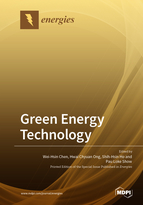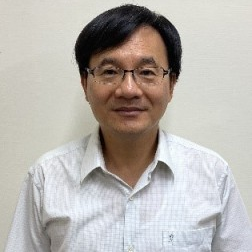Green Energy Technology
A special issue of Energies (ISSN 1996-1073). This special issue belongs to the section "B: Energy and Environment".
Deadline for manuscript submissions: closed (31 May 2021) | Viewed by 68527
Special Issue Editors
Interests: bioenergy; hydrogen energy; clean energy; thermoelectric generation; environmental engineering; AI & machine leaning for energy
Special Issues, Collections and Topics in MDPI journals
Interests: energy and fuel; renewable energy; environmental sustainability; biomass energy; thermal engineering; green technology
Special Issues, Collections and Topics in MDPI journals
Interests: CO2 fixation from microalgae; biodiesel production from microalgae; bioethanol production from microalgae, lutein production from microalgae
Interests: biotechnology; bioprocess; bioengineering
Special Issues, Collections and Topics in MDPI journals
Special Issue Information
Dear Colleagues,
The Green Energy Technology (GET) covers technologies, products, equipment, and devices as well as energy services based on software and data protected by patents and/or trademarks. Recent trends underline the principles of a circular economy such as sustainable product design, extending the product lifecycle, reusability, and recycling. Climate change, environmental impact, and limited natural resources require scientific research and novel technical solutions. The Special Issue of Green Energy Technology in Energies serves as a publishing platform for scientific and technological approaches to “green”—i.e., environmentally friendly and sustainable—technologies. While a focus lies on energy and bioenergy, it also covers "green" solutions in all aspects of industrial engineering. Green Energy Technology addresses researchers, advanced students, technical consultants as well as decision-makers in industries and politics. This Special Issue will publish a comprehensive overview and in-depth technical research paper addressing recent progress in Green Energy Technology. Studies of advanced techniques and methods in Green Energy Technology are also welcome. Research involving experimental and numerical studies, recent developments, and the current state-of-the-art and emerging technologies in this field are highly encouraged.
Prof. Dr. Wei-Hsin Chen
Prof. Dr. Hwai Chyuan Ong
Prof. Dr. Shih-Hsin Ho
Dr. Pau Loke Show
Guest Editors
Manuscript Submission Information
Manuscripts should be submitted online at www.mdpi.com by registering and logging in to this website. Once you are registered, click here to go to the submission form. Manuscripts can be submitted until the deadline. All submissions that pass pre-check are peer-reviewed. Accepted papers will be published continuously in the journal (as soon as accepted) and will be listed together on the special issue website. Research articles, review articles as well as short communications are invited. For planned papers, a title and short abstract (about 100 words) can be sent to the Editorial Office for announcement on this website.
Submitted manuscripts should not have been published previously, nor be under consideration for publication elsewhere (except conference proceedings papers). All manuscripts are thoroughly refereed through a single-blind peer-review process. A guide for authors and other relevant information for submission of manuscripts is available on the Instructions for Authors page. Energies is an international peer-reviewed open access semimonthly journal published by MDPI.
Please visit the Instructions for Authors page before submitting a manuscript. The Article Processing Charge (APC) for publication in this open access journal is 2600 CHF (Swiss Francs). Submitted papers should be well formatted and use good English. Authors may use MDPI's English editing service prior to publication or during author revisions.
Keywords
- bioenergy
- solar energy
- wind energy
- marine energy
- geothermal energy
- hydrogen energy
- energy storage
- energy saving
- CO2 capture and utilization
- thermoelectric generation
- thermodynamics
- heat transfer









